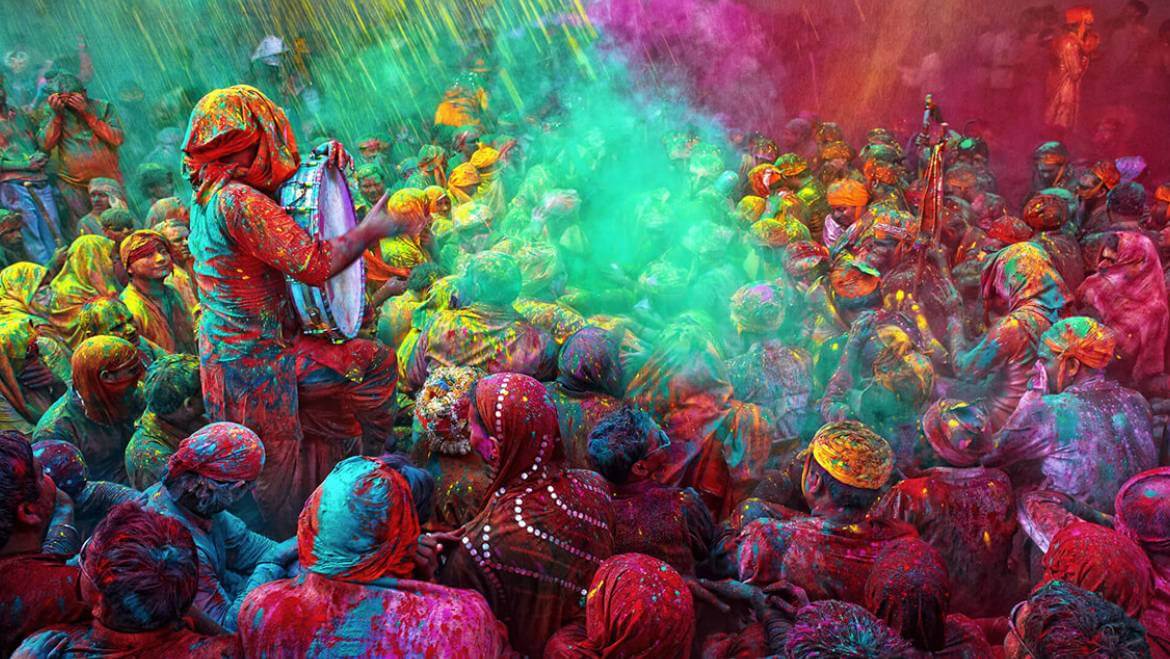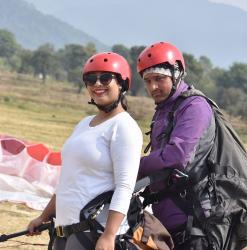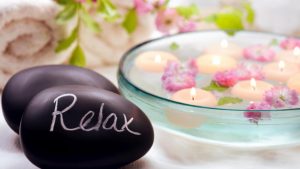How about trying something unconventional on your vacation in India? Don’t limit yourself to a routine itinerary filled only with sightseeing and shopping. Instead, delve into the heart of India by participating in one or more of its festivals. As a diverse nation, India is home to countless festivals, each beautifully showcasing the country’s rich culture and traditions. Regardless of whether you visit during spring, summer, autumn, winter, or monsoon, there’s always a reason to celebrate in India. To help you navigate, we’ve compiled a list of 16 renowned religious and cultural festivals that you simply must experience. Let’s dive in!
- Makar Sankranti Festival
- Pongal Festival
- Rann Utsav Festival
- Kumbh Mela
- Maha Shivaratri Festival
- Holi Festival
- Baisakhi Festival
- Eid-ul-Fitr Festival
- Shri Krishna Janmashtami
- Ganesh Chaturthi Festival
- Onam Festival
- Navratri Festival
- Dussehra Festival
- Durga Puja Festival
- Diwali Festival
- Gurpurab Festival
Makar Sankranti Festival
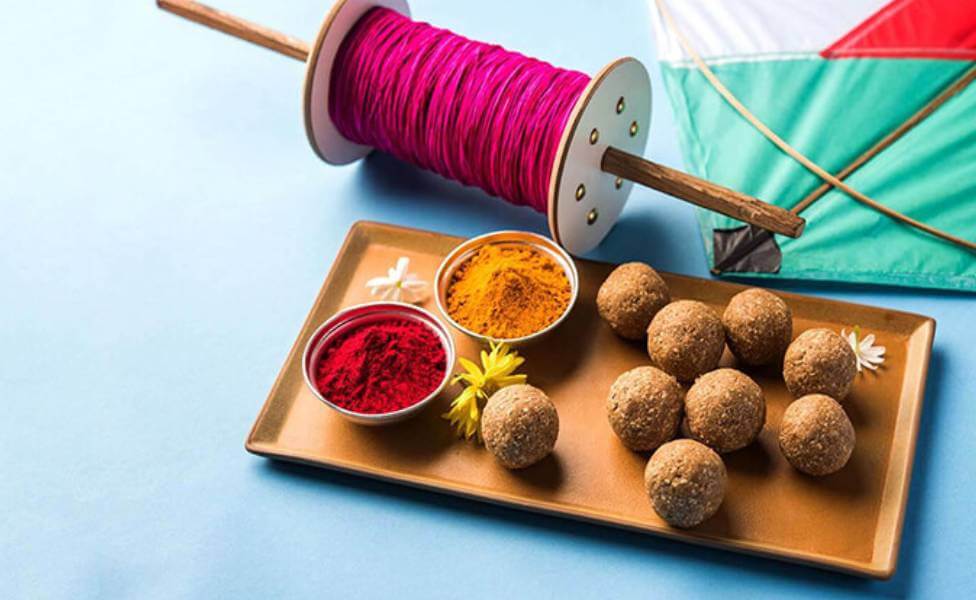
Often seen as the North Indian New Year, Makar Sankranti is celebrated the day after the Lohri festival. It signifies the end of winter and heralds the beginning of the harvest season. This festival is observed across the country, each region celebrating with its unique name and rituals. Distinct from other Hindu festivals, Makar Sankranti’s date remains constant, aligned with the solar cycle. On this auspicious day, festivities include flying kites, preparing a savory dish called “Bajre ki Khichdi,” and making sweets like “Til ke Ladoo.”
When: January
Best Places to Go:
- Jaipur, Rajasthan
- Haridwar, Uttarakhand
- Guwahati, Assam – For Bhogali/Magh Bihu
- Ahmedabad, Gujarat – For Uttarayan Festival
- Bageshwar, Uttarakhand – For Uttarayani Fair
Pongal Festival
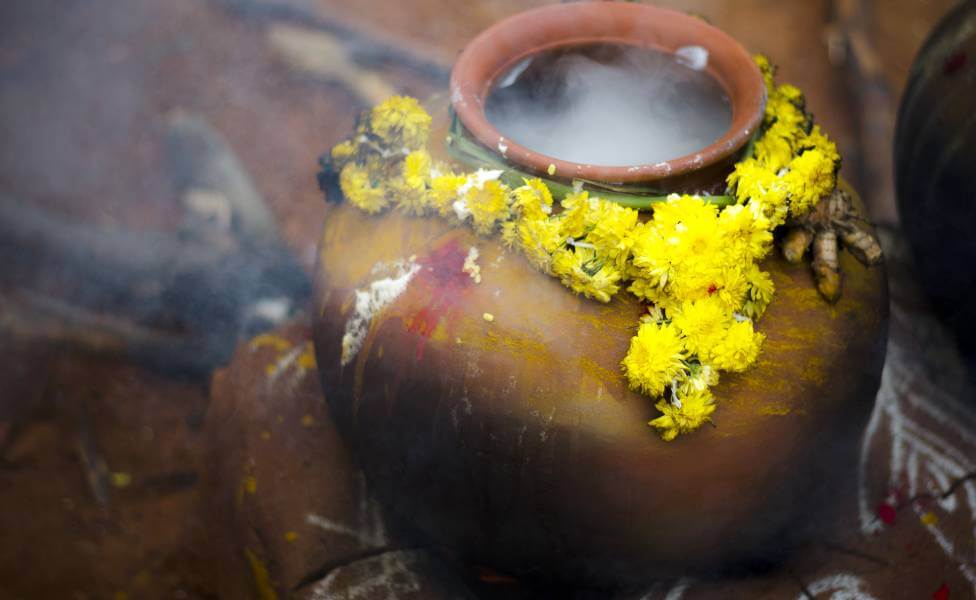
Pongal is another harvest and cultural festival celebrated in January. Spanning four days, it showcases the rich culture and traditions of the Tamilians. On this sacred occasion, people harvest crops and offer their worship to the gods. The festival’s culinary delights, known as Pongal food, stand out as its main attraction. Popular dishes like Kheer, Chitrana, Medu Vada, Coconut Rice, and Curd Rice are prepared during this time. It’s undoubtedly a cultural festival in India that one must experience.
When: Celebrated in mid-January annually
Where: While Tamilians across India observe Pongal, its primary celebrations are in Tamil Nadu.
Best Places to Go:
- Madurai – For Jallikattu
- Thanjavur
- Pollachi
- Salem
- Coimbatore
Rann Utsav Festival
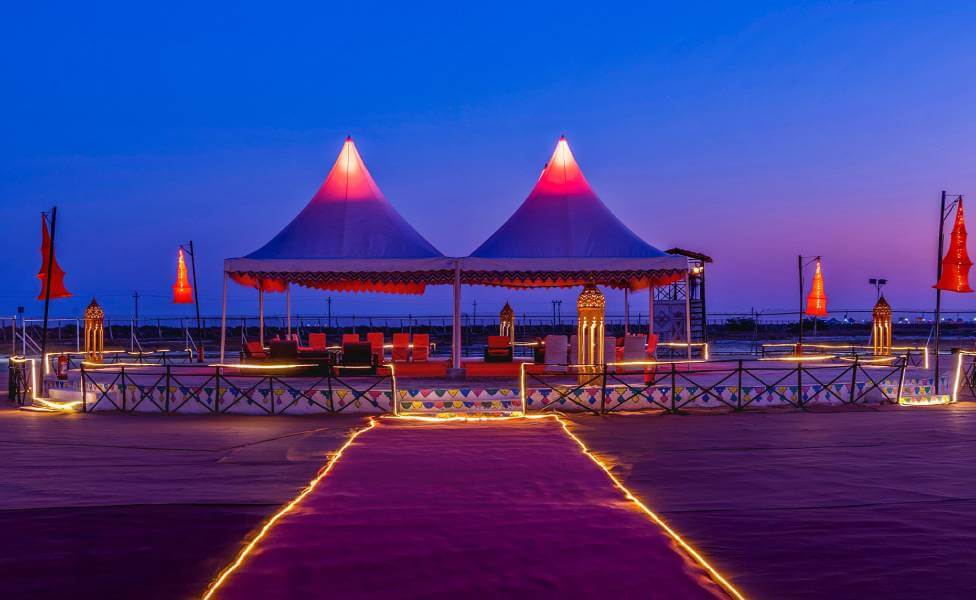
A highlight of Gujarat tourism, Rann Utsav is a vibrant celebration of Gujarat’s music and dance, making it one of the most eagerly awaited cultural festivals in India. Held annually from November to February, this festival unfolds against the striking backdrop of the white salt desert in Kutch. The event celebrates Gujarat’s rich culture and heritage, featuring folk dances, music, food stalls, adventure sports, cultural shows, and exquisite handicrafts. Rann Utsav was first celebrated in 2006, aiming to position the region prominently on the global tourism map. To truly immerse in the cultural tapestry of Gujarat, plan your visit during this Kutch festival.
When: November to February
Where: Dhordo Village, The Rann of Kutch, Gujarat
Kumbh Mela
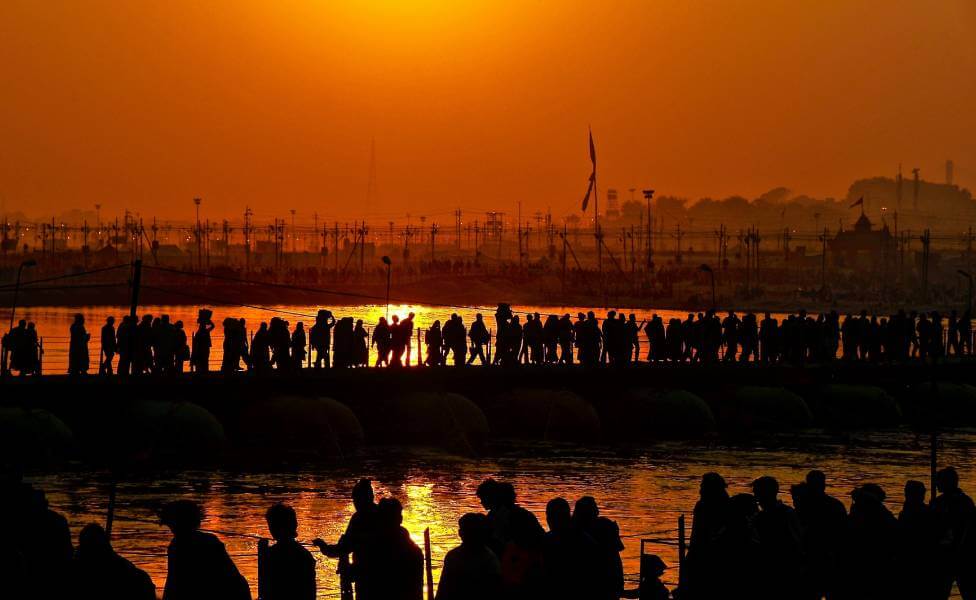
Kumbh Mela, the largest gathering on Earth, is categorized into four types: Purna Kumbh (held every 144 years), Maha Kumbh (celebrated every 12 years), Ardh Kumbh (held every 6 years), and Kumbh Mela (observed every 3 years). Based on astrological calculations, the event takes place when Jupiter is in Aries, typically spanning from mid-January to February or March. During this significant religious festival in India, devotees, accompanied by Sadhus (Hindu holy men), partake in ritualistic baths in the rivers where, according to Hindu mythology, the Amrit (elixir/nectar) was spilled. The event draws millions, encompassing both locals and international attendees.
When: Mid-January to March
Where: Prayagraj, Haridwar, Nashik, and Ujjain
Highlight: Shahi Snan (Royal Bath) and Naga Sadhus
Upcoming Mahakumbh Mela 2025: Prayagraj
Maha Shivaratri Festival
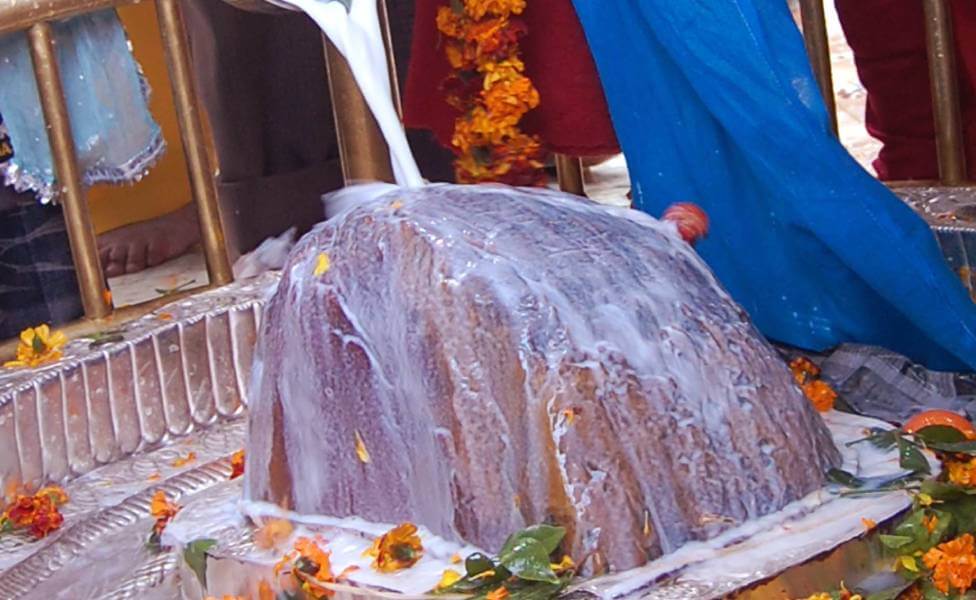
Maha Shivaratri, dedicated to Lord Shiva, is celebrated on the 14th day of the dark fortnight in the Hindu month of Phalgun (February – March). According to beliefs, worshiping Lord Shiva on this day purges one of all sins. Moreover, observing a fast on Maha Shivaratri is believed to bestow marital bliss upon both unmarried and married women.
When: February – March
Where: Throughout India, with a particular emphasis in the northern region.
Best Places to Go:
- Varanasi, Uttar Pradesh – For the Shiva Wedding Procession
- Mandi, Himachal Pradesh – Known for the largest Mahashivratri celebration in India
- Srikalahasti, Andhra Pradesh
- Sibasagar, Assam
Holi Festival
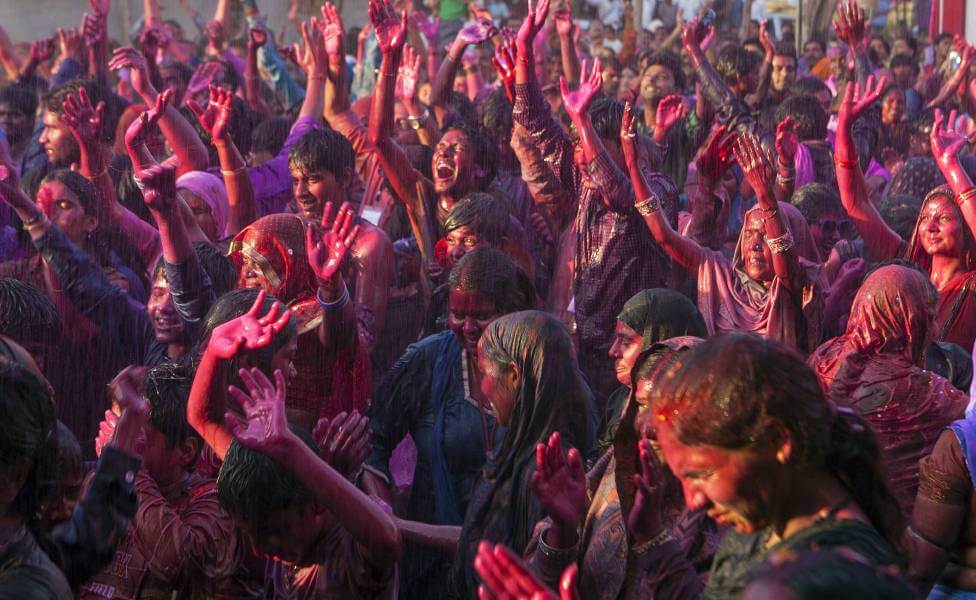
Holi, undoubtedly among the most significant festivals in India, transcends being merely a festival; it’s a medium to disseminate love and joy. This vibrant celebration heralds the onset of spring and epitomizes the triumph of good over evil. Festivities kick off on the eve with massive bonfires around which people gather, singing and dancing. This bonfire ritual symbolizes the defeat of the demoness Holika. The true exuberance emerges on the festival’s day, with attendees reveling by hurling colors and water at one another. A highlight of this festivity is the assortment of delicious Indian snacks curated specially for the occasion.
When: March
Where: Throughout India, predominantly in the northern regions.
Best Places to Go:
- Mathura, Uttar Pradesh
- Vrindavan, Uttar Pradesh – Holi as celebrated by widows using flowers
- Barsana, Uttar Pradesh – Holi festivities featuring sticks and shields
- Shantiniketan, West Bengal – Marking the Basant Utsav
- Manipur – Celebrating the Yaoshang Festival
Baisakhi Festival
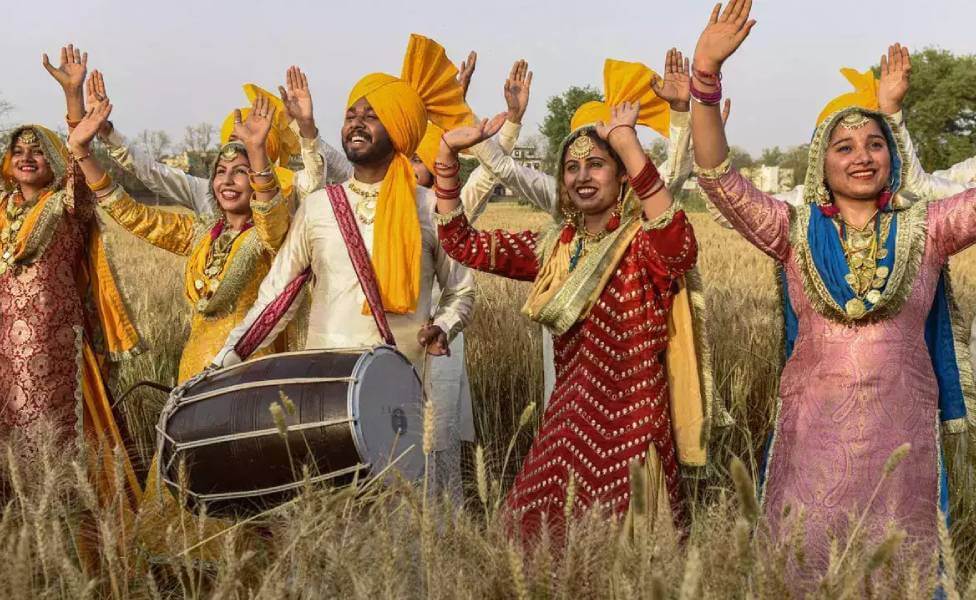
Celebrated by the Sikh community, Baisakhi heralds the start of the harvest season for rabi crops. Both a historical and religious festival in Sikhism and Hinduism, Baisakhi commemorates the day in 1699 when the tenth Sikh Guru, Guru Gobind Singh, established the Khalsa order. The festivities involve adorning houses and Gurudwaras, as well as engaging in traditional folk dances like Giddha and Bhangra.
When: April
Where: Punjab
Best Places to Go:
- Amritsar
- Pinjore
- Chandigarh
- Jalandhar
Eid-ul-Fitr Festival
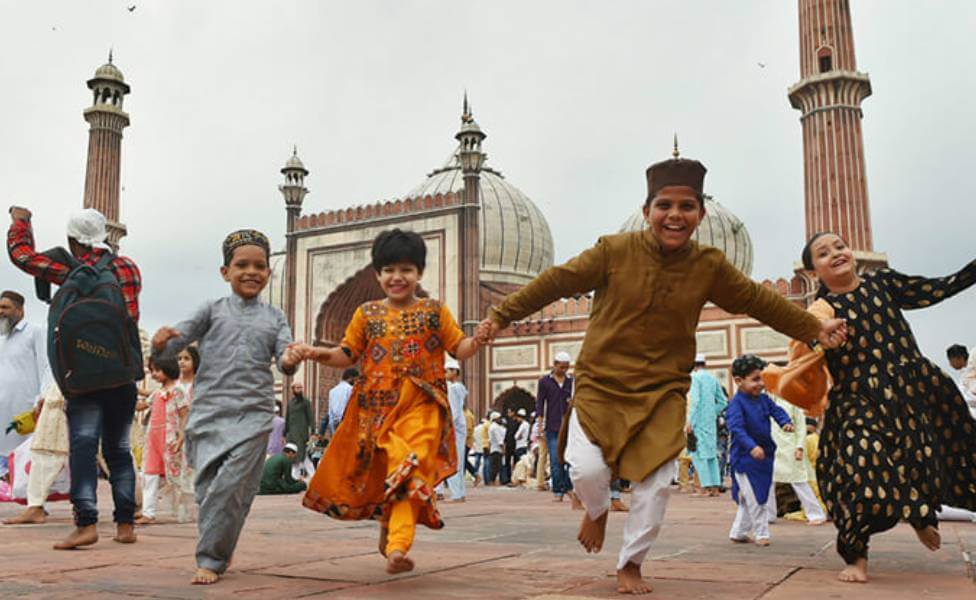
Eid-ul-Fitr, a paramount religious festival for Muslims, is celebrated annually during May or June. It signifies the conclusion of Ramadan, the sacred month of fasting. Beyond offering prayers in mosques, the festival involves visiting friends and family and partaking in communal feasts. The dessert ‘Sevaiyan’ is a traditional treat crafted specifically for this auspicious occasion. It’s noteworthy that the entire month of Ramadan is characterized by special culinary delights, with cities like New Delhi, Lucknow, and Hyderabad buzzing with irresistible offerings during iftar (the evening meal when fasts are broken). The markets during this time are vibrant and operate until late into the night, making the entire Ramadan period as lively and festive as Eid-ul-Fitr itself.
When: May
Where: Throughout India
Best Places to Go:
- Hyderabad, Telangana
- Mumbai, Maharashtra
- Lucknow, Uttar Pradesh
- Delhi
- Bengaluru, Karnataka
- Kolkata, West Bengal
Shri Krishna Janmashtami
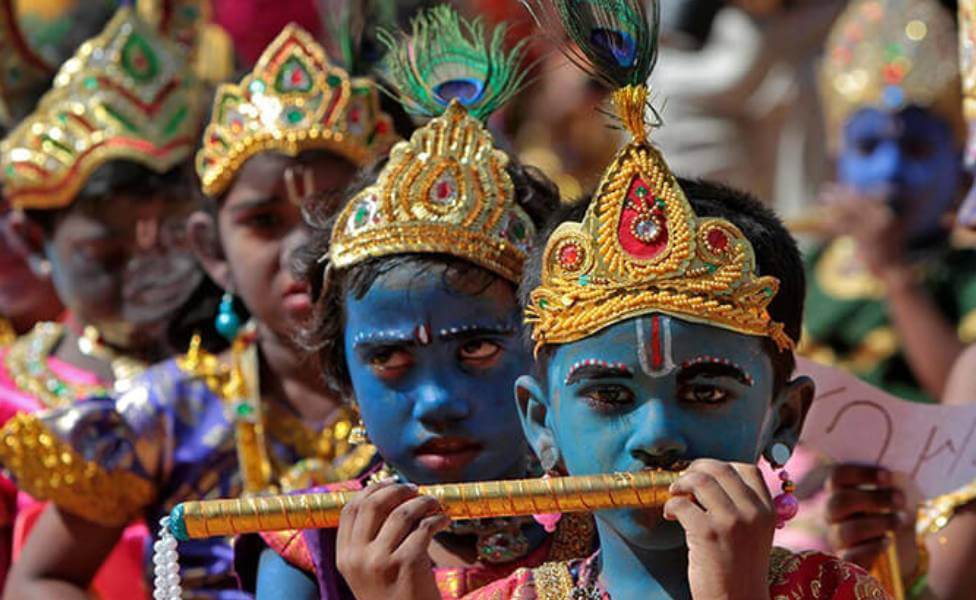
Janmashtami, which falls in August, is a revered Hindu festival celebrating the birth of Lord Krishna. It’s a day when devotees believe Lord Krishna graced the world with his divine presence. In homage, an array of delicacies is prepared and offered to the deity. Mathura, Lord Krishna’s birthplace, and Vrindavan, where he spent his early years, are particularly significant during this festival, making them prime destinations for Janmashtami celebrations. Devotees observe a fast that they break in the evening, post-dusk. The festivities also include temple visits, prayers, dances, and singing of bhajans (devotional songs). Moreover, many temples organize narrations of Lord Krishna’s life stories.
When: August
Where: Across India
Best Places to Go:
- Mathura, Uttar Pradesh
- Vrindavan, Uttar Pradesh
- Gokul, Uttar Pradesh
- Mumbai, Maharashtra
- Dwarka, Gujarat
- Puri, Odisha
- Udupi, Karnataka
- Guruvayur, Kerala
- Jhunjhunu, Rajasthan – Noteworthy for its unique celebrations in the Dargah of Narhar.
Ganesh Chaturthi Festival
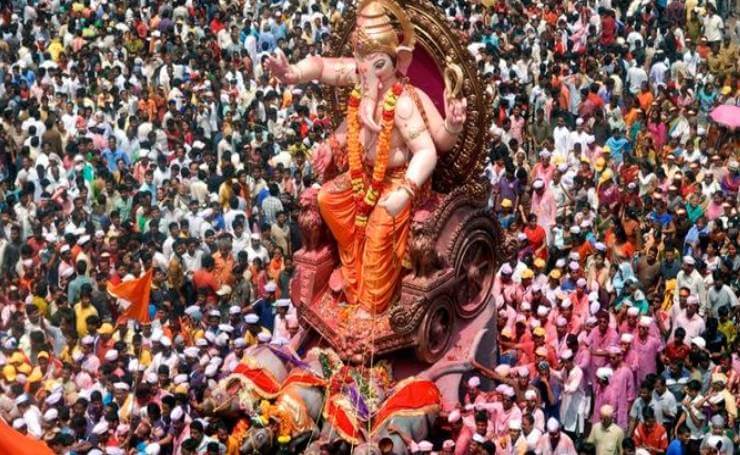
Spanning ten days and celebrated with immense devotion, Ganesh Chaturthi is among the most venerated Hindu festivals in India. It commemorates the birth of Lord Ganesha, the son of Lord Shiva. Festivities commence with the installation of Lord Ganesha’s idols in homes and specially erected public pandals. For the subsequent eight days, the idol is worshiped with fervor and joy. Offerings, including sweets and fruits, are presented to Lord Ganesha. On the culminating tenth day, the idol is ceremoniously immersed in water, marking the end of the celebrations. Various processions accompany the deity to water bodies, where the final ritual of immersion takes place.
When: August – September
Where: Predominantly across India, with a special focus in Maharashtra
Best Places to Go:
- Mumbai, Maharashtra
- Pune, Maharashtra
- Hyderabad, Telangana
- Goa
Onam Festival
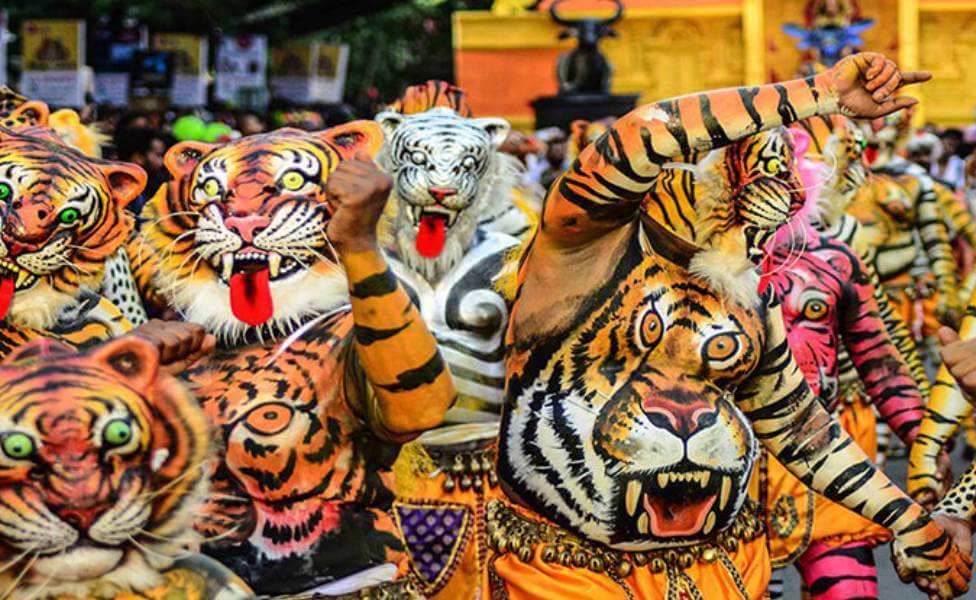
Festivals offer a vibrant window into the diverse traditions of India’s states. For those keen on delving into Kerala’s rich cultural tapestry, the Onam festival serves as an ideal portal. Onam stands out as a pivotal festival in Kerala, celebrated in anticipation of King Mahabali’s spirit, believed to revisit his subjects during this period.
Moreover, the festival also heralds the Malayalam New Year, stretching its celebrations over ten days. The jubilations encompass various activities: worship, intricate floral arrangements, sumptuous feasts, and traditional dances. Among the chief attractions of this renowned South Indian festival are the snake boat race, which takes place on the Aranmula River, and the mesmerizing Kathakali dance. Another captivating event is the Pulikali procession, where artists, adorned and painted to resemble hunters and tigers, bring the tales of yore to life.
When: August – September
Where: Kerala
Best Places to Go:
- Thiruvananthapuram
- Kochi
- Pathanamthitta
- Thrissur
Navratri Festival
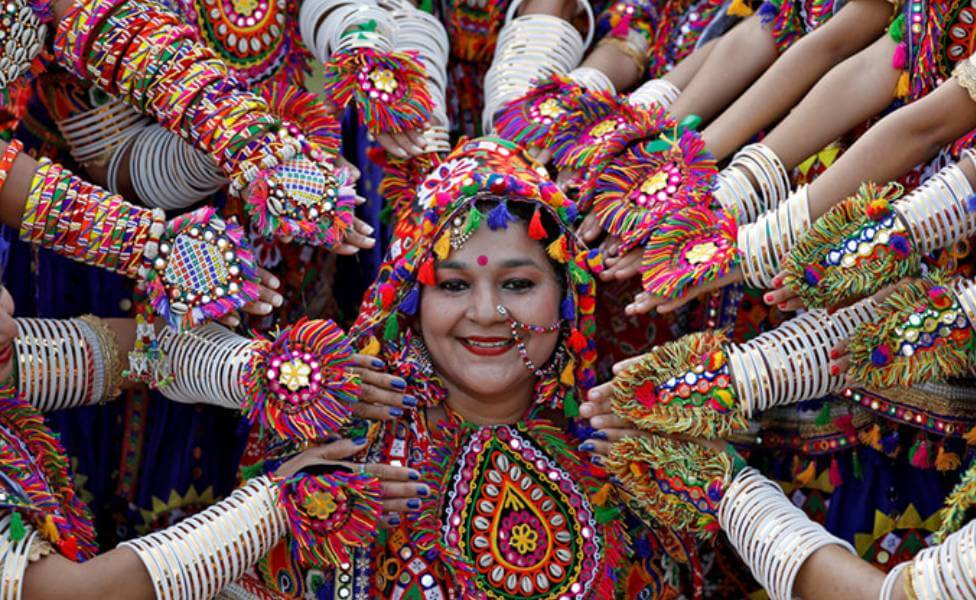
Navratri stands as one of India’s most significant religious festivals. The name ‘Navratri’ translates to ‘nine nights,’ reflecting the festival’s duration of nine days. Throughout this period, devotees venerate Goddess Shakti, an incarnation of Goddess Sati, and often observe fasts to seek her blessings.
According to tradition, each of the nine days is dedicated to a distinct avatar of Goddess Shakti. While Navratri is observed across various parts of India, Gujarat adds a unique and festive flair to the celebrations. A highlight of Gujarat’s Navratri is the vibrant performance of the Garba dance and Dandiya Raas, where participants don traditional attire, making it both a visual and participatory delight.
When: September – October
Where: Across India
Best Places to Go:
- Ahmedabad, Gujarat
- Vadodara, Gujarat
- Mumbai, Maharashtra
- Delhi
Dussehra Festival
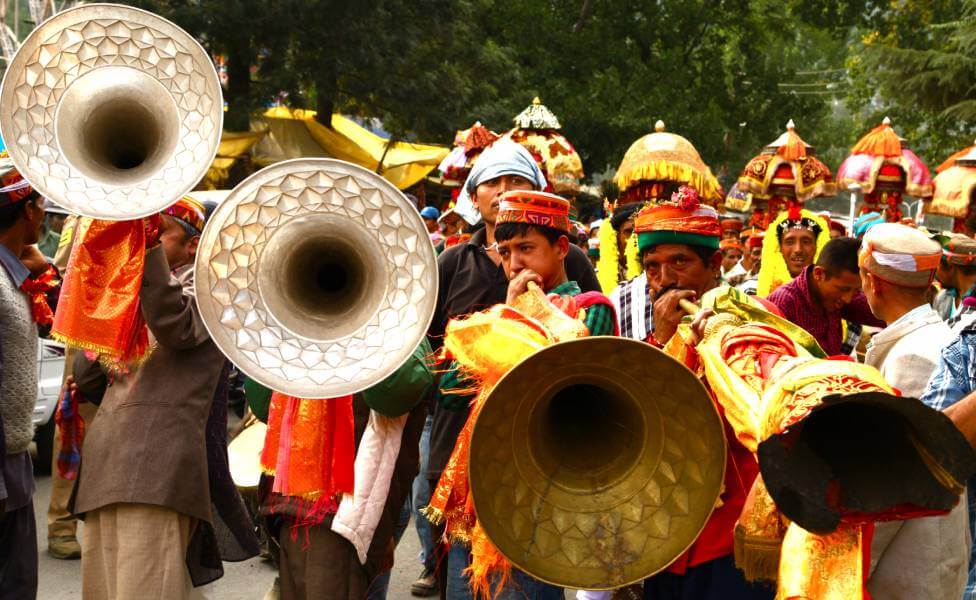
Also referred to as Vijayadashami, Dussehra is commemorated the day following the culmination of the Navratri festival. Its origins are rooted in the time of the Ramayana. According to Hindu mythology, Dussehra marks the day when Lord Rama vanquished Ravana. Consequently, the festival celebrates the triumph of good over evil. A hallmark of this esteemed religious occasion is the reenactment of scenes from the Hindu epic, the Ramayana, culminating in the burning of effigies representing Ravana, his son Meghanath, and his brother Kumbhakarna.
When: September – October
Where: Across India
Best Places to Go:
- Mysore, Karnataka
- Kullu, Himachal Pradesh
- Delhi
- Varanasi, Uttar Pradesh
- Barara, Haryana – Renowned for the tallest Ravana effigy
Durga Puja Festival
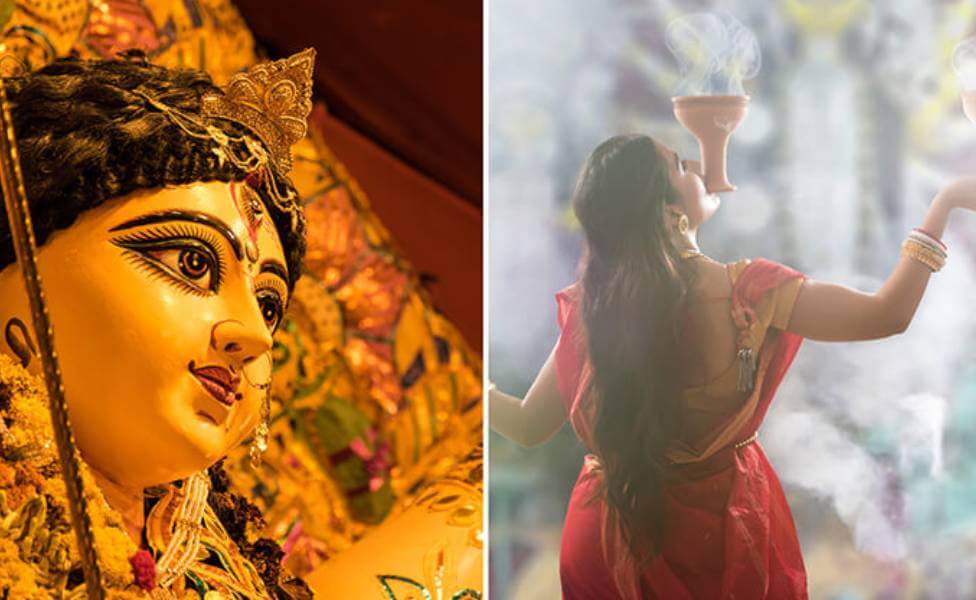
Embodying the rich culture and traditions of the Bengali community, Durga Puja, often referred to as ‘Durga Pujo’ by Bengalis, stands as one of India’s most vibrant festivals. Spanning four days, it culminates on Dussehra, also known as Bijaya Dashmi.
A key feature of Durga Puja is the intricately crafted Puja Pandals, which house the idols of Goddess Durga. During the Pujo festivities, people indulge in a plethora of culinary delights, and as the days progress, the celebrations amplify with dance and music performances at these pandals. The festival commemorates the triumph of Goddess Durga over the demon Mahishasura, symbolizing the power and valor of Shakti – the universal female force. Mirroring the practices of Ganesh Chaturthi, Durga Puja also sees the immersion of the deity’s idol in water.
When: September – October
Where: West Bengal, Tripura, Assam, Jharkhand, Bihar, and Odisha
Best Places to Go:
- Kolkata, West Bengal
- Guwahati, Assam
- Mumbai, Maharashtra
- Delhi
- Patna
Diwali Festival
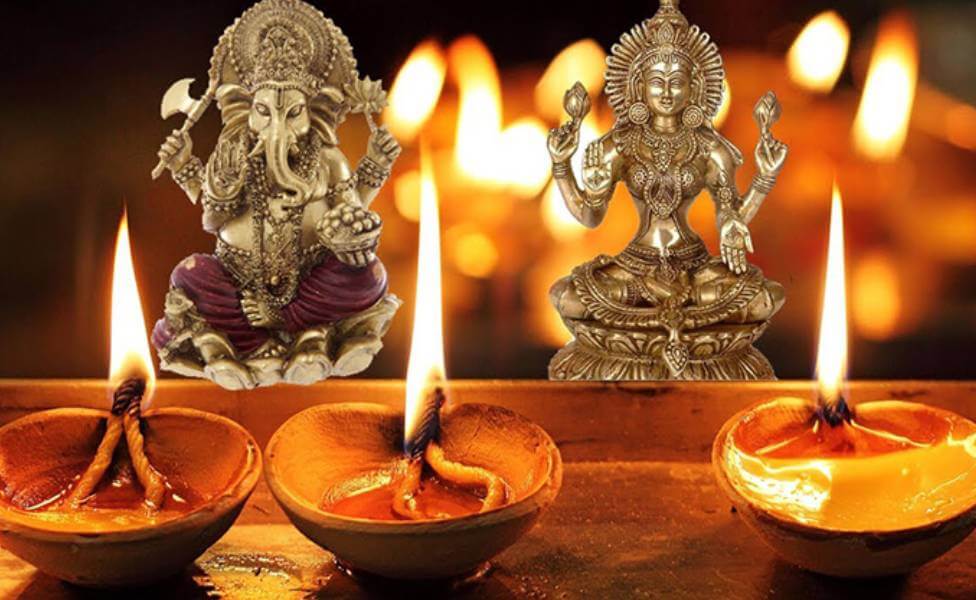
Diwali certainly doesn’t require an introduction. It holds the distinction of being the most celebrated religious festival in India. Often dubbed as the “festival of lights,” Diwali embodies the spirit of spreading peace and happiness. It commemorates the return of Lord Rama, Goddess Sita, and Lakshman to Ayodhya, a city in Uttar Pradesh, after a 14-year exile. Legend has it that to celebrate Lord Rama’s return, the citizens of Ayodhya illuminated the entire city with thousands of earthen lamps. Today, individuals continue this tradition by decorating their homes with lamps, candles, and lights. Exchanging gifts with friends and family remains an integral part of the celebration. For children, Diwali is particularly special as they delight in bursting crackers and indulging in an array of sweets. On Diwali, prayers are offered to Goddess Laxmi and Lord Ganesha.
When: October – November
Where: Across India
Best Places to Go:
- Varanasi, Uttar Pradesh – For Dev Deepawali
- Amritsar, Punjab – For Bandi Chhor Divas
- Kolkata, West Bengal – For Kali Puja
- Jaipur, Rajasthan
- Udaipur, Rajasthan
- Goa – For the Narak Chaturdashi Procession
Gurpurab Festival

Gurpurab holds immense significance for the Sikh community as it celebrates the birth of Guru Nanak, the first Sikh Guru. The observance kicks off a couple of days prior with the continuous 48-hour reading of the Guru Granth Sahib, the sacred scripture of the Sikhs, termed as Akhand Path. Subsequently, a grand procession called Nagarkirtan is organized, showcasing various displays including martial arts. During Gurpurab, homes shimmer with lamps and candles, while streets are adorned with Sikh flags and blossoms. Numerous gatherings take place in Gurdwaras, accompanied by special langars (community meals). Firecrackers brighten the skies in jubilation, and some individuals even establish complimentary meal stalls alongside roads.
When: October – November
Where: Predominantly celebrated by the Sikh community throughout India, especially in Punjab.
Best Places to Go:
- Amritsar, Punjab
- Kartarpur, Punjab
- Kullu, Himachal Pradesh
- Delhi
Every festival reflects the rich tapestry of culture and traditions distinct to various Indian regions. We hope you’ve appreciated this compilation of eminent religious events in India and are eager to embark on your next journey. For further intriguing reads, continue to follow us.
Like & Follow our social media accounts at Twitter, Facebook, Linkedin & Instagram for getting the latest updates & offers on holiday packages.
Disclaimer: We do not take credit for some of the licenced paid images used in our blogs, whether from Google Images, Fotolia & Shutterstock. All such images are the copyrights of their respective owners and we try to provide credit for them wherever we can. If, however, any copyright image has been used on our blog, the concerned person can either mail us directly to remove the image or provide credit to whomsoever the image may belong to.
About the author
From the Lake District, Nainital, Nidhi Singh is a travel writer whose love for mountains can be seen in her write ups. Talk about solo travelling, indulging in adventure activities, binging on good food, planning budget trips or the Aurora Borealis and you will get all her attention. It is the wanderlust that keeps her going and if at all she could get one wish granted she would love to live a life less ordinary. Follow her on Twitter, Facebook & Instagram.

 +91-9212777225
+91-9212777225 Plan Your trip
Plan Your trip